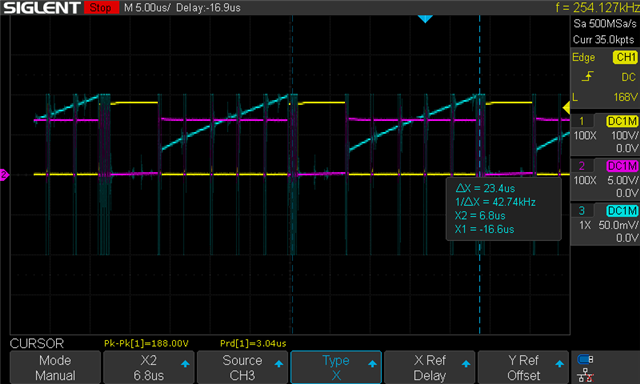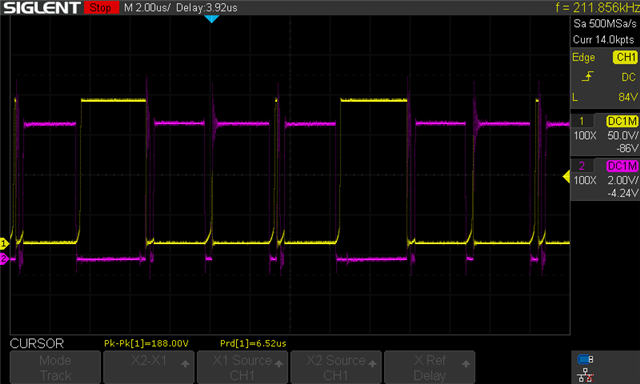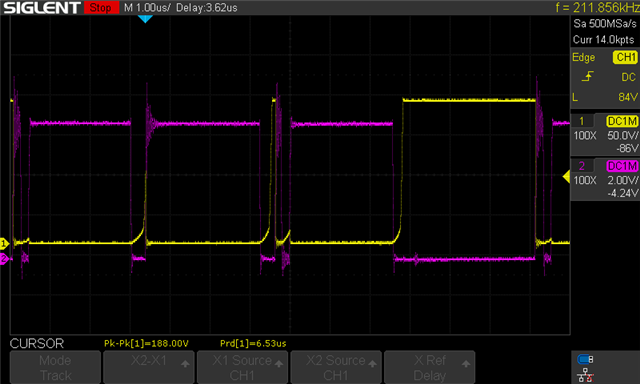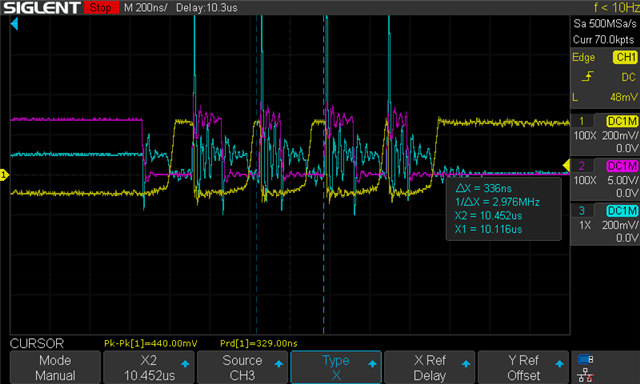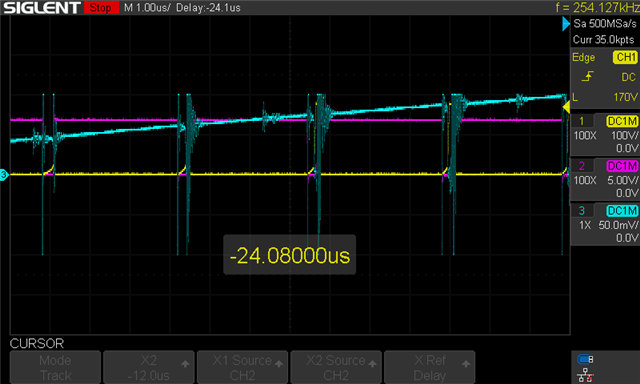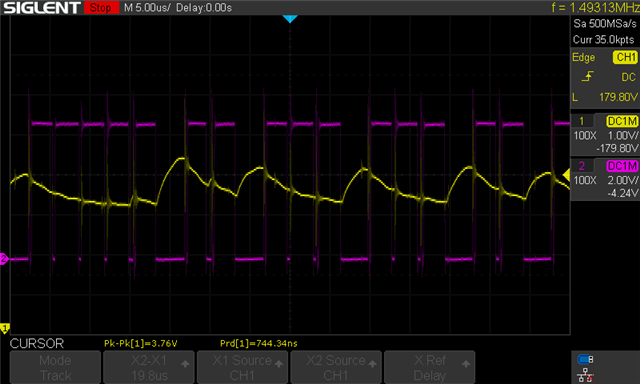Other Parts Discussed in Thread: LM5156
Dear TI team,
I've designed a boost converter using the LM5156 IC with an input voltage of 50V, output voltage of 180V, and an output power of 30W. The converter's frequency is set at 330kHz, and it employs peak current control. The expected duty cycle is around 0.75. However, I'm observing a peculiar behavior where the correct PWM waveform is not established in a single switching cycle. Instead, there are about five consecutive cycles where the duty cycle is almost at maximum (around 0.95), essentially not turning off the transistor. Following these, there's an entire off-period. If the PWM were averaged out ignoring the quasi-leading periods, the frequency seems to be around 40kHz, not the set 330kHz. It's as if the converter is exhibiting variable duty cycle operation. Although the output voltage does reach the expected 180V, the behavior appears anomalous. Interestingly, after the five quasi-leading cycles, the inductor current reaches the target 1A, at which point the PWM state should ideally toggle. Could the issue potentially be related to slope compensation, or is the rate of rise of the inductor current too gradual?